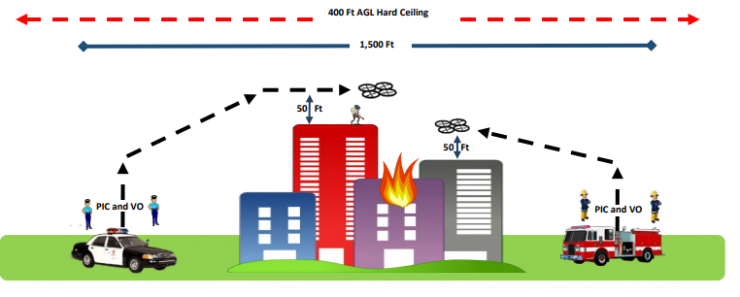To support the approval of “Tactical Beyond Visual Line of Sight” operations, the US Federal Aviation Administration (FAA) has issued a guide to TBVLOS waivers, aimed at first responders with emergency drone operations. The FAA introduced TBVLOS to support drone operations which take place away from busy locations and where the safety case can be supported by factors such as a particular location or application.
In a time of extreme emergencies to safeguard human life, first responders require the capability to operate their unmanned aircraft (UAS) beyond visual line of sight (BVLOS) to assess the operational environment such as a fire scene at a large structural fire, to conduct an aerial search on a large roof area for a burglary in progress, or to fly over a heavily forested area to look for a missing person (see diagram below for a visual perception). To support public UAS operators acting in an active first responder capacity, the FAA may approve “First Responder Tactical Beyond Visual Line of Sight” (TBVLOS) waivers to 14 CFR 91.113(b).
These temporary BVLOS flights are flown to both reduce risk to first responders and to ensure the safety of the communities they serve. The FAA will issue in advance, upon receipt of a complete and accurate application, a 14 CFR 91.113(b) waiver that will allow temporary UAS TBVLOS operations within specific conditions and requirements. These requirements are listed in the guidance document, along with the application and approval process.
The guide can be accessed here: https://www.faa.gov/uas/public_safety_gov/public_safety_toolkit/media/TBVLOS_Waiver_Final.pdf
For more information visit:




